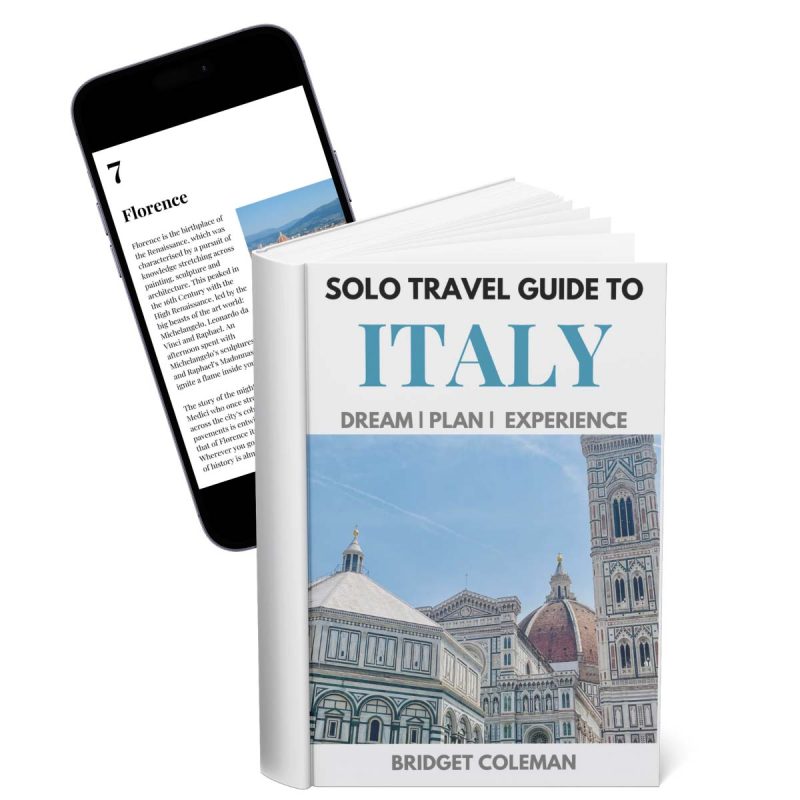In this guide I share my favourite things to do in Siena, one of Italy’s most magical cities.
The swallows start to fill the skies above Siena at daybreak. From their rooftop nests, these aerial acrobats dart and swoop through the air, tracing elegant arcs against the backdrop of the city’s medieval buildings and the Tuscan hills.
But these swallows are more than just seasonal visitors; they are a living connection to Siena’s storied past. They have been part of the landscape for centuries, their annual return marking the passage of time as much as the ringing of the Basilica of San Domenico’s bells.
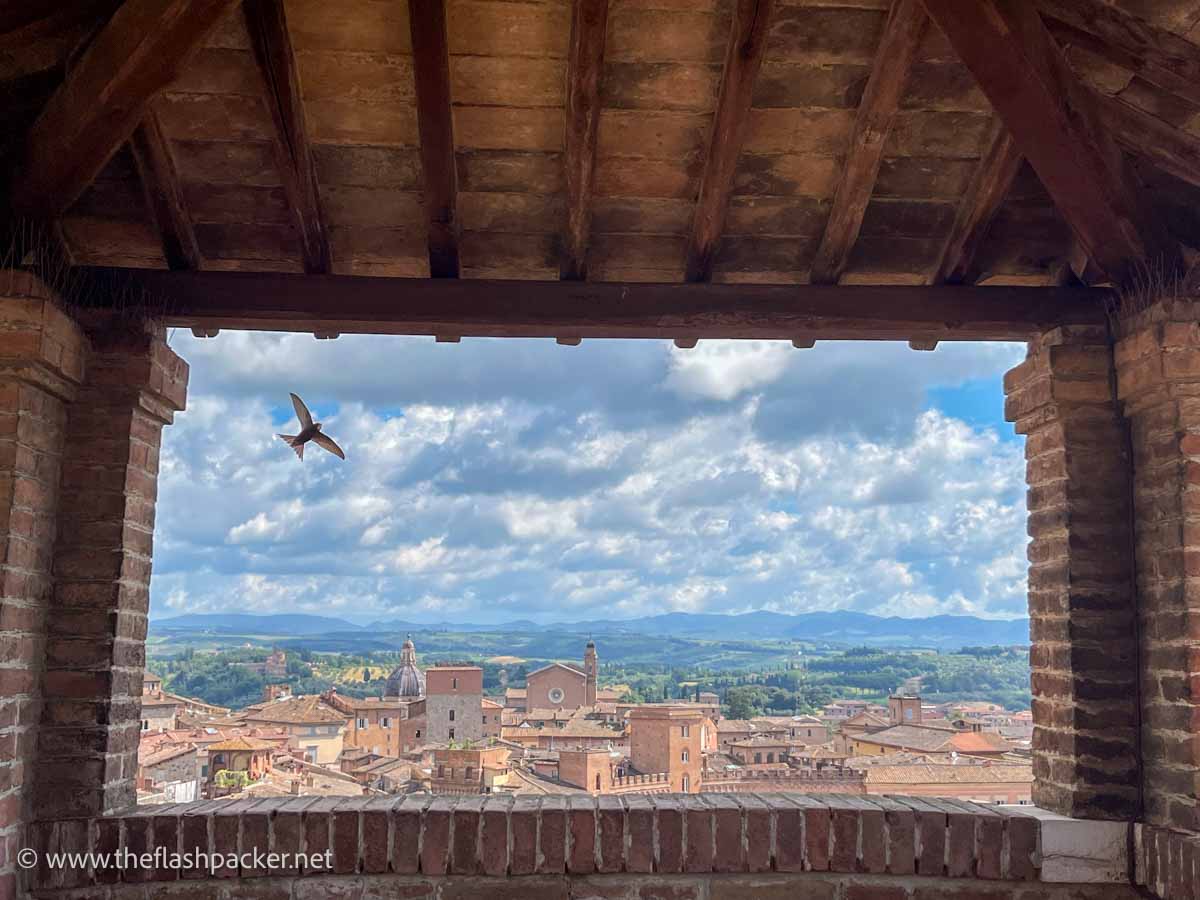
Siena has an almost effortless beauty and has changed little since its glory days of the 14th Century when it was Florence’s arch-rival. Florence may have been the political and economic victor, but Siena still gives it a run for its money when it comes to capturing the hearts of today’s visitors.
Its narrow streets radiate from Italy’s most magnificent square, Piazza del Campo, draping themselves across the three hills on which the city is built. At its centre sits Tuscany’s most dazzling cathedral and tallest tower, Torre del Mangia.
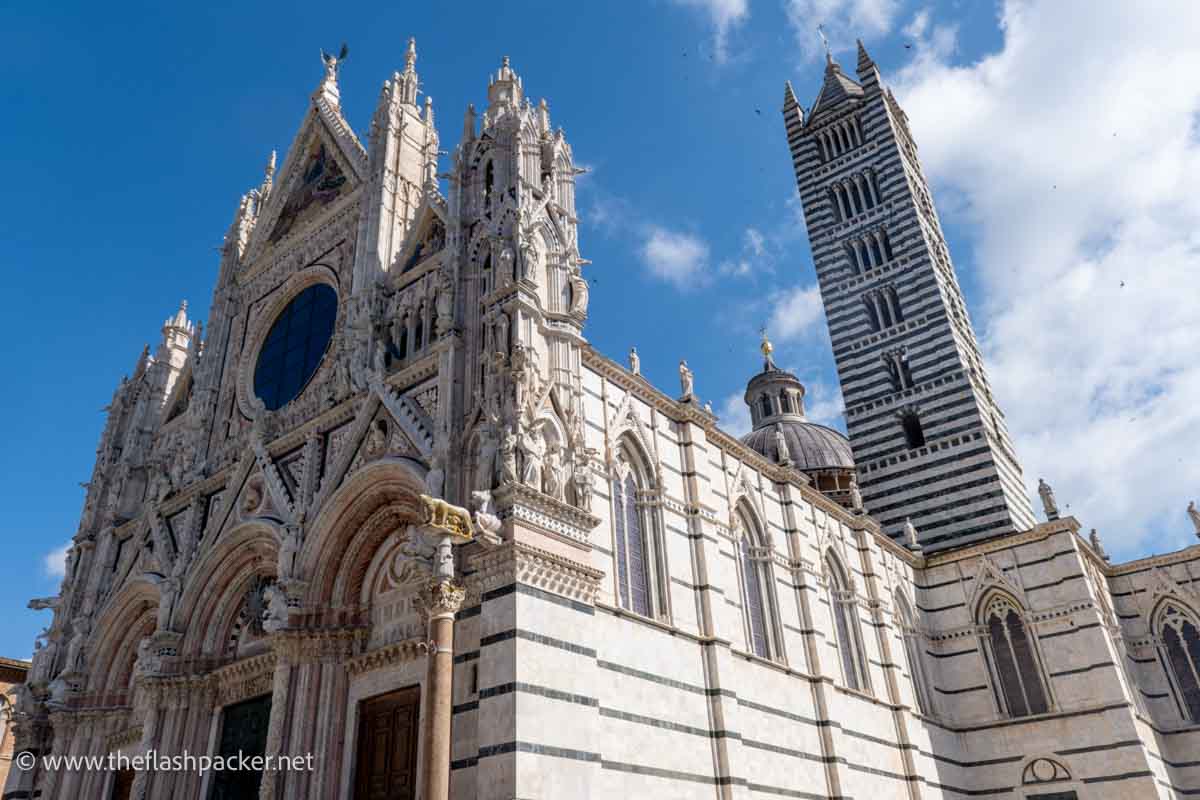
Although Siena is an easy day trip from Florence, it deserves much more than a whistle-stop tour of its must-see sights. This is a city to savour, not to rush through, ticking off items on a travel bucket list.
Some articles on this website contain affiliate links. This means that I may earn a small commission if you make a purchase through these links. As an Amazon Associate, I earn from qualifying purchases. Read the full disclosure here.
I’VE WRITTEN THIS ITALY SOLO TRAVEL GUIDE!
A 100+ page ebook to inspire and equip solo travellers with the confidence and knowledge to explore Italy independently
- Plan Your Trip – with curated itineraries, budgeting and how to get around
- Explore Awesome Destinations – guides to the must-see cities of Rome, Florence, Venice and Naples
- Stay Safe as a Solo Traveller – practical safety advice, empowering you to confidently navigate Italy and avoid common pitfalls
- Enjoy Eating Out in Italy – essential tried-and-tested solo dining tips
Siena is famous as the home of Il Palio
Siena has been divided into administrative wards (contrade) since the 13th Century, each represented by a mascot and a set of colours. They continue to play an active role in the city, their territories marked by colourful banners, wall plaques and lamps.
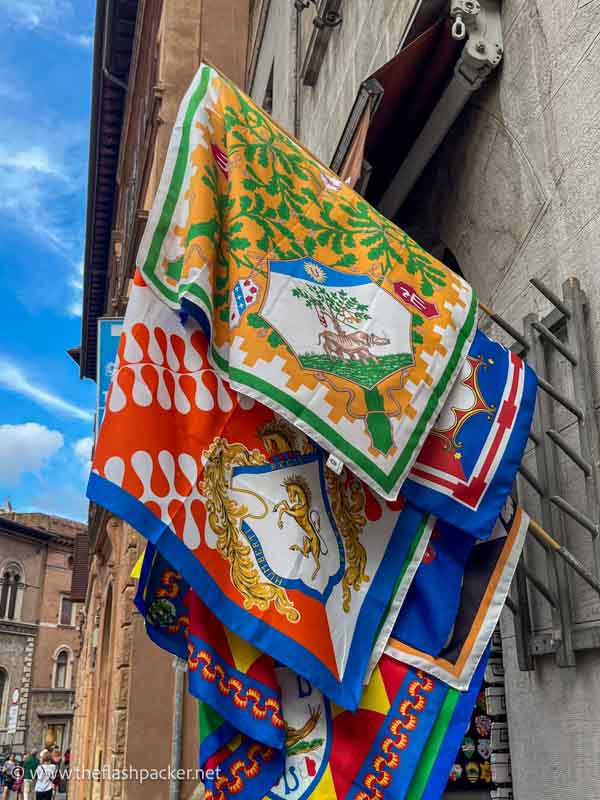
Contrada pride culminates in Italy’s most spectacular festival, the historic Palio horse race, or Il Palio, held in Piazza del Campo on July 2 and August 16 each year. Ten riders representing these contrade compete fiercely in a 90-second race, a vibrant, chaotic spectacle, reflecting deep-seated rivalries and pride.
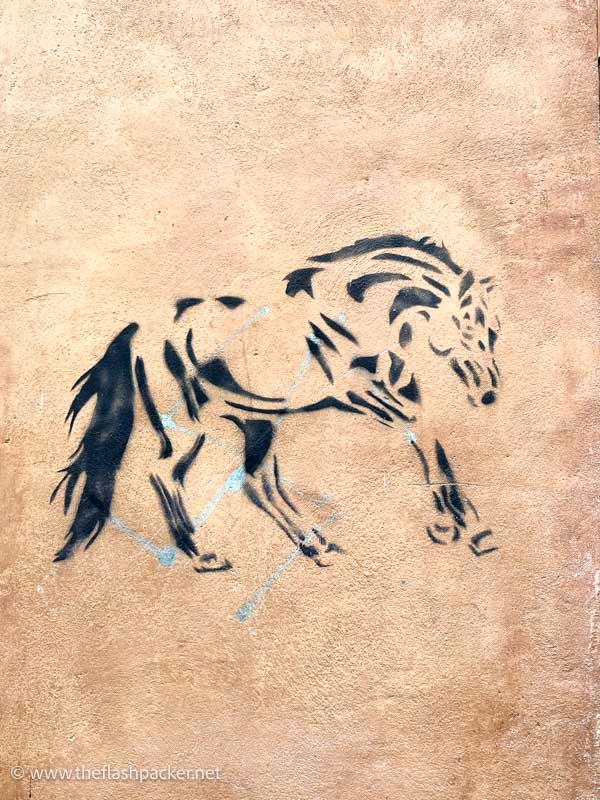
The shell-shaped, red-brick square Piazza del Campo is one of Italy’s most recognisable squares. The low picturesque buildings clinging to its curves allow sunlight to flood the square, turning it into prime sunbathing territory for locals and visitors alike.
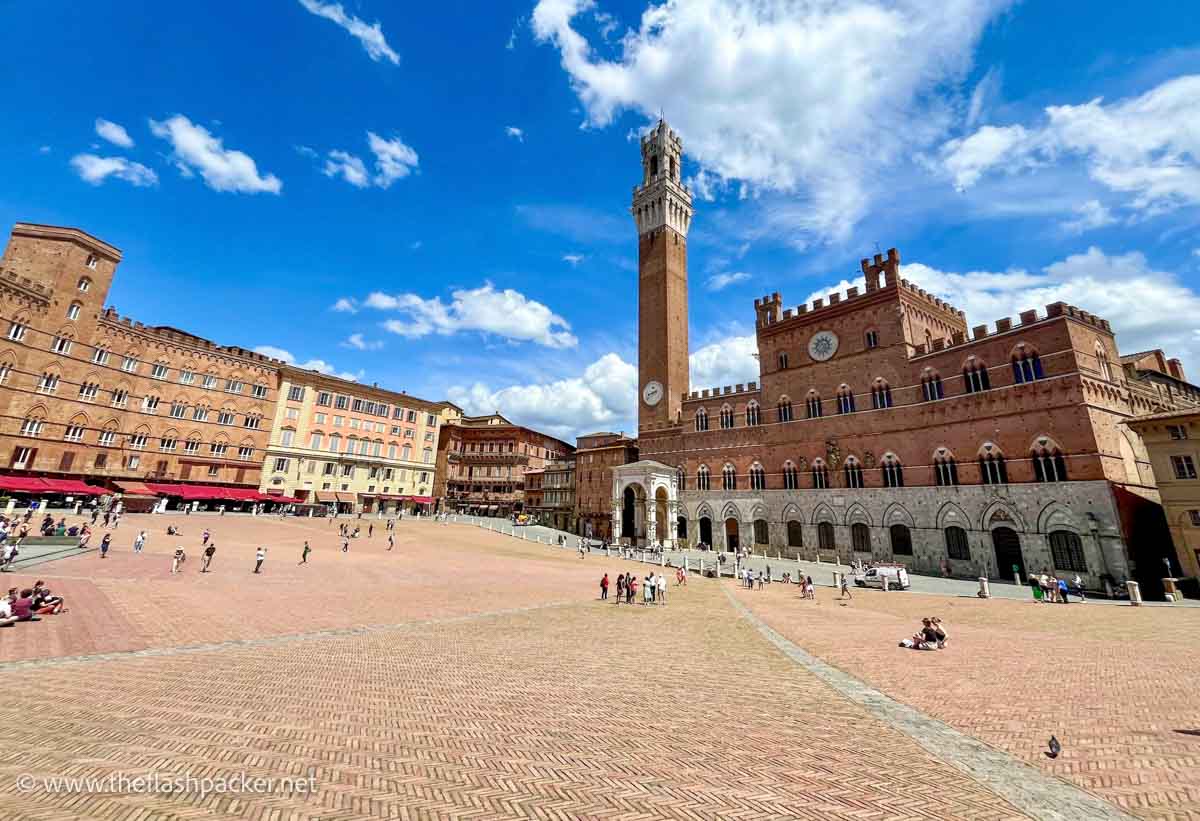
Although glorious, Fonte Gaia is a fake, a 19th-century copy of the original fountain by Jacopo della Quericia. Fed by underground viaducts, this was the main source of drinking water for the Sienese. Two small fountains continue to hydrate thirsty visitors.
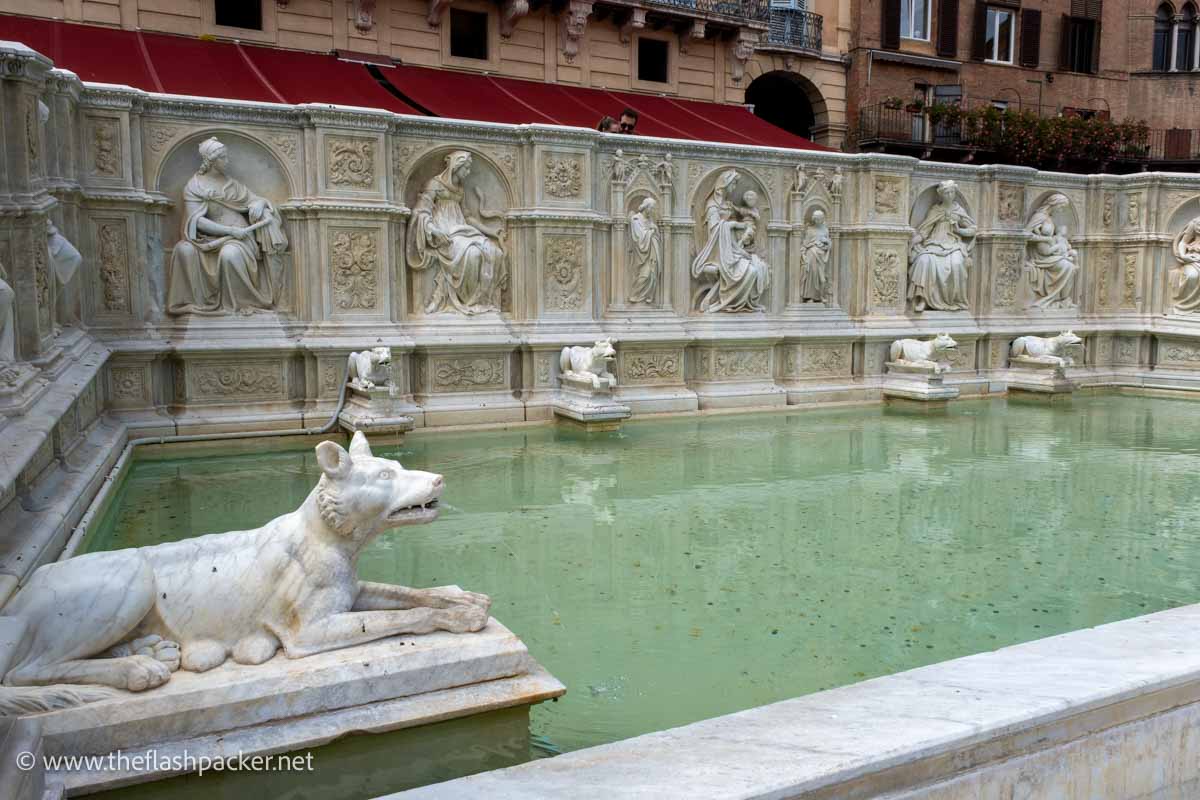
Art meets communal rule at Palazzo Publico
Il Campo slopes gently to the Gothic Palazzo Publico on its southeast side.
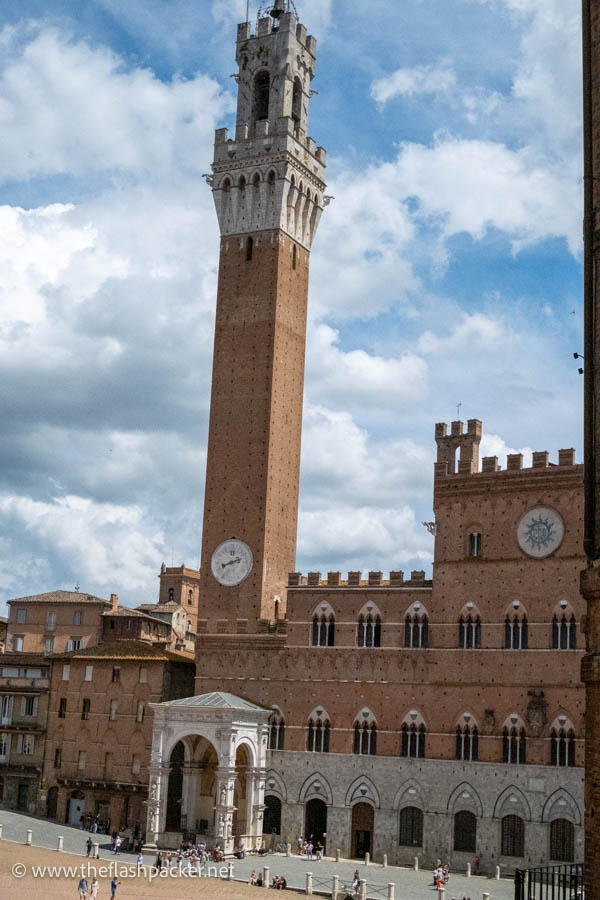
Built between 1297 and 1310, this was the seat of the Council of Nine, or Consiglio dei Nove, which played a pivotal role in the administration of Siena during its medieval heyday. This group of nine elected officials was responsible for maintaining peace, overseeing economic activities and ensuring justice within the city.
Ambrogio Lorenzetti’s Allegory of Good and Bad Government frescoes inside the palazzo attest to the Council’s vision of a well-ordered and ethical society. The Sala del Mappamondo and the Sala della Pace have frescoes by Lorenzetti and Simone Martini, tangible connections between the artistic prowess of the era and the political and social ideals of Siena.
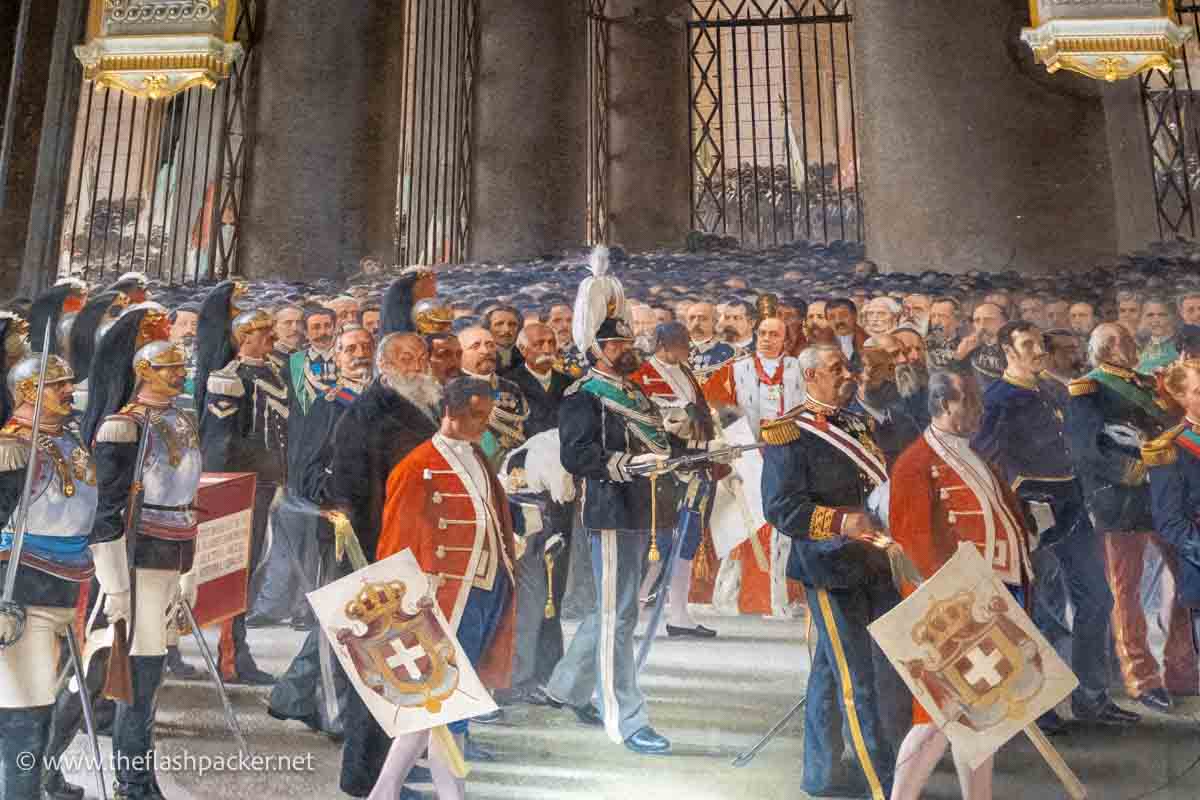
Siena’s medieval skyscraper
Soaring over the city’s brick buildings like a giant exclamation mark, Torre del Mangia was designed to rival the height of the cathedral’s campanile, symbolizing the secular power of the Republic of Siena. Its name is taken from its first bell-ringer, Giovanni di Balduccio, nicknamed “Mangiaguadagni” (profit eater) due to his reputed fondness for food and spending.
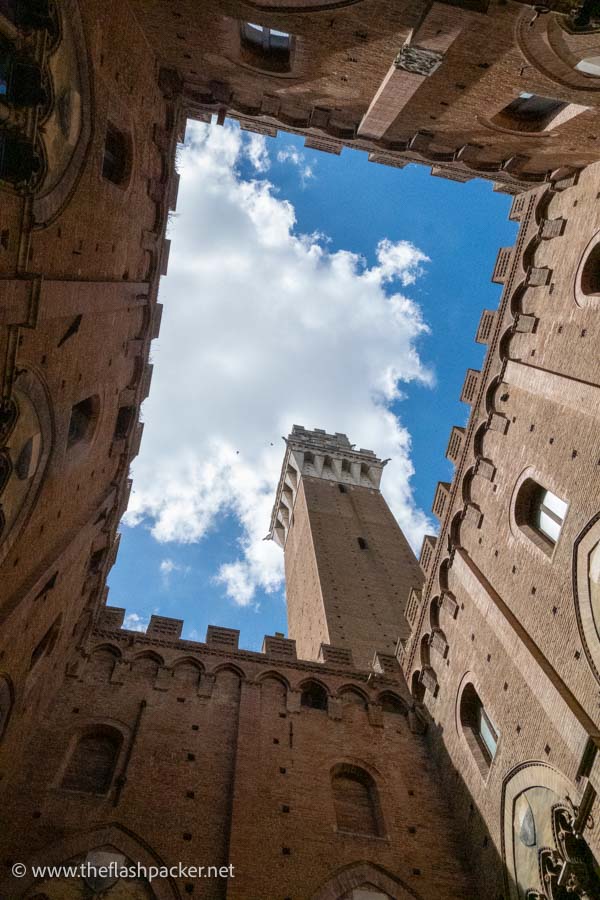
Your reward for climbing to the top of Torre del Mangia is an unbeatable view over Il Campo and Siena’s red rooftops. But make no mistake; this is a challenging trudge up narrow, winding staircases.
A spectacular shrine to the Virgin Mary
If Siena’s civic pride is manifested in Palazzo Publico and Torre del Mangia, the Duomo is its spiritual masterpiece. Dazzling inside and out, Siena Cathedral is a confection of striped columns, inlaid marble floors and side chapels stuffed with exquisite artwork.
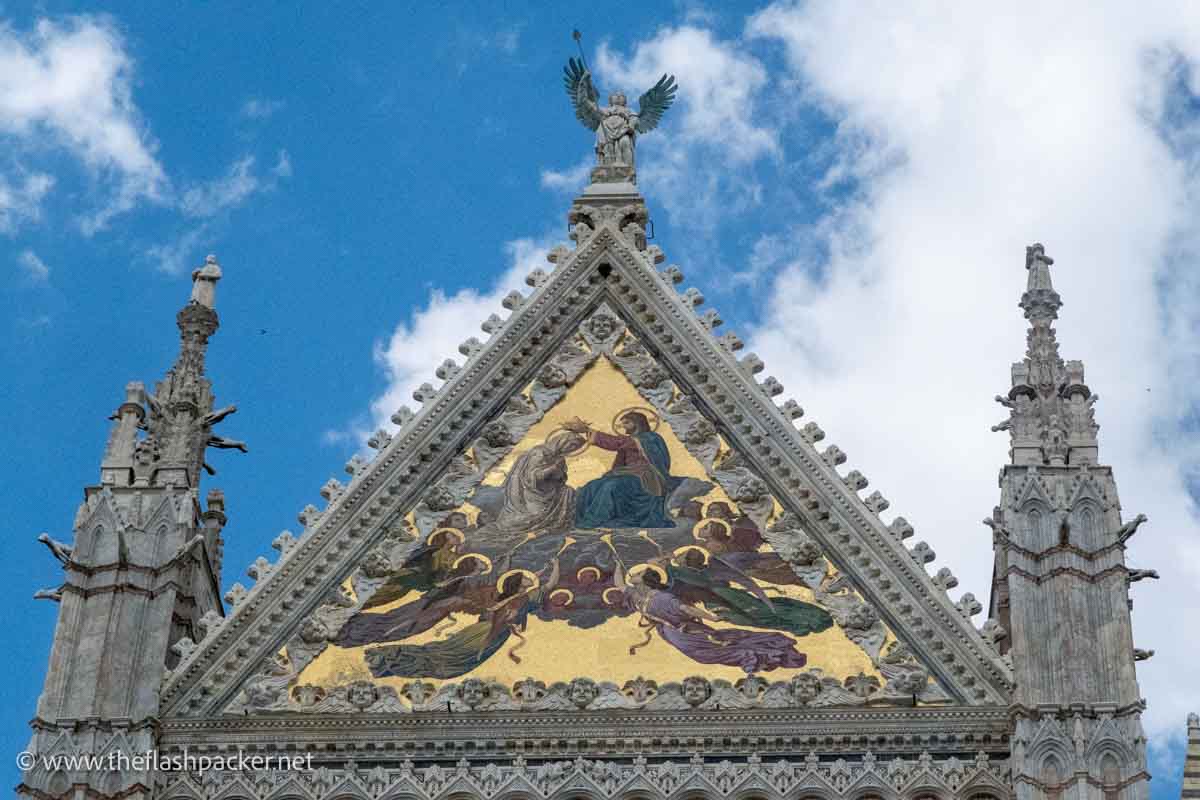
There’s a hexagonal pulpit by Pisano and sculptures chiselled by Michelangelo, Donatello and Bernini.
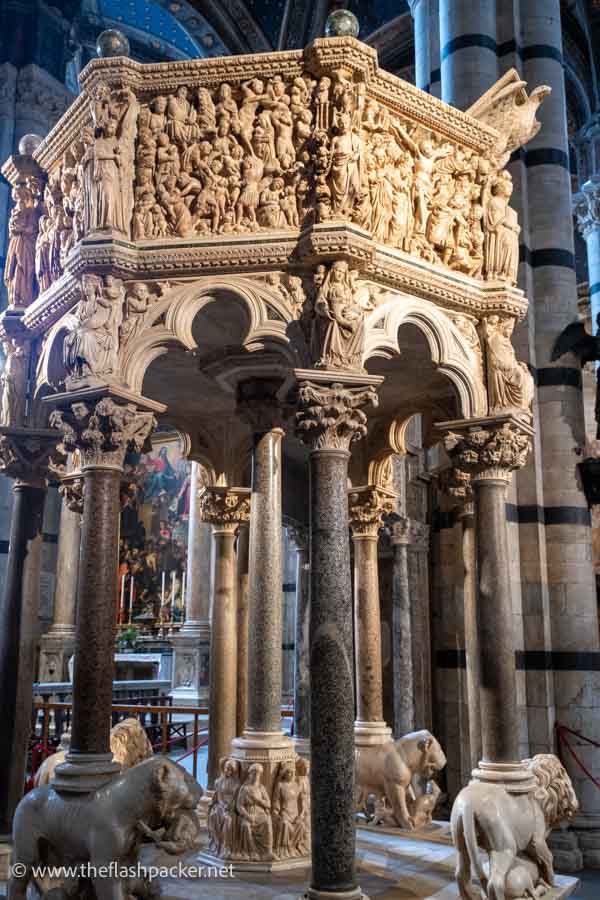
The Piccolomini Library, with its vibrant frescoes by Pinturicchio, depicts the life of Pope Pius II and is a masterpiece of the early Renaissance.
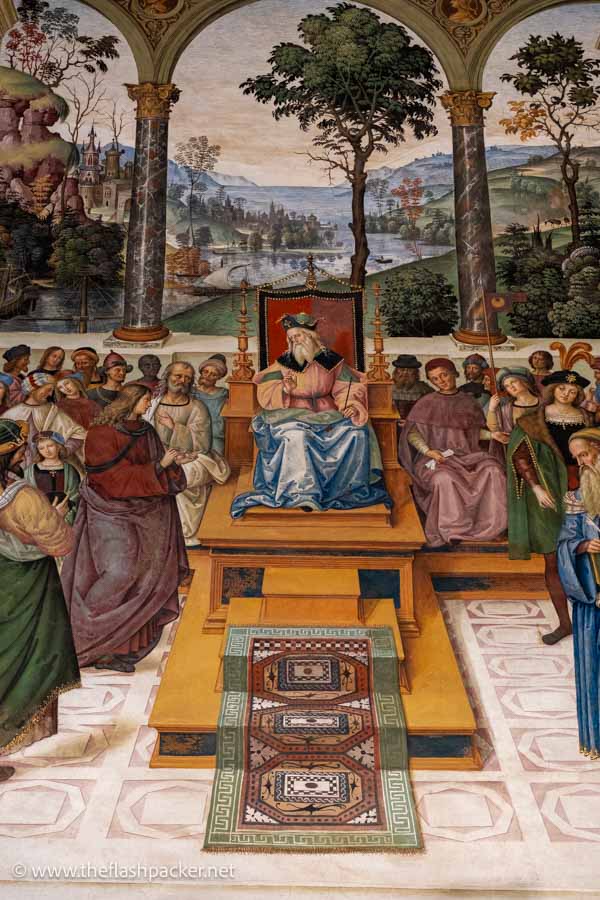
Many of the cathedral’s artistic treasures were moved to Opera del Duomo
Siena Cathedral Museum (Opera del Duomo) is home to some of Italy’s artistic masterpieces.
Sala Duccio houses Maestà by Duccio di Buoninsegna (1260 – 1319). Duccio was the Sienese artistic rockstar of his time and he painted this extraordinary panel for the Duomo’s high altar.
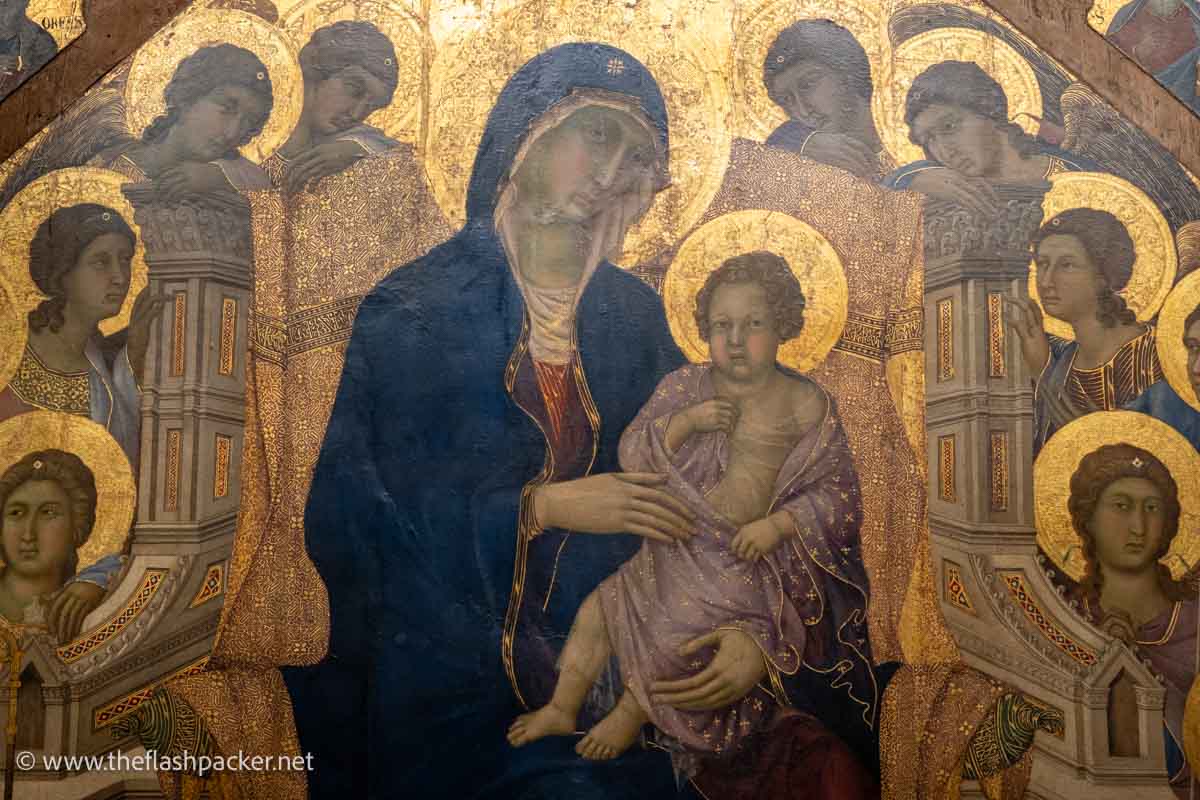
His circular stained-glass window, created for the cathedral’s east end, is also in the museum.
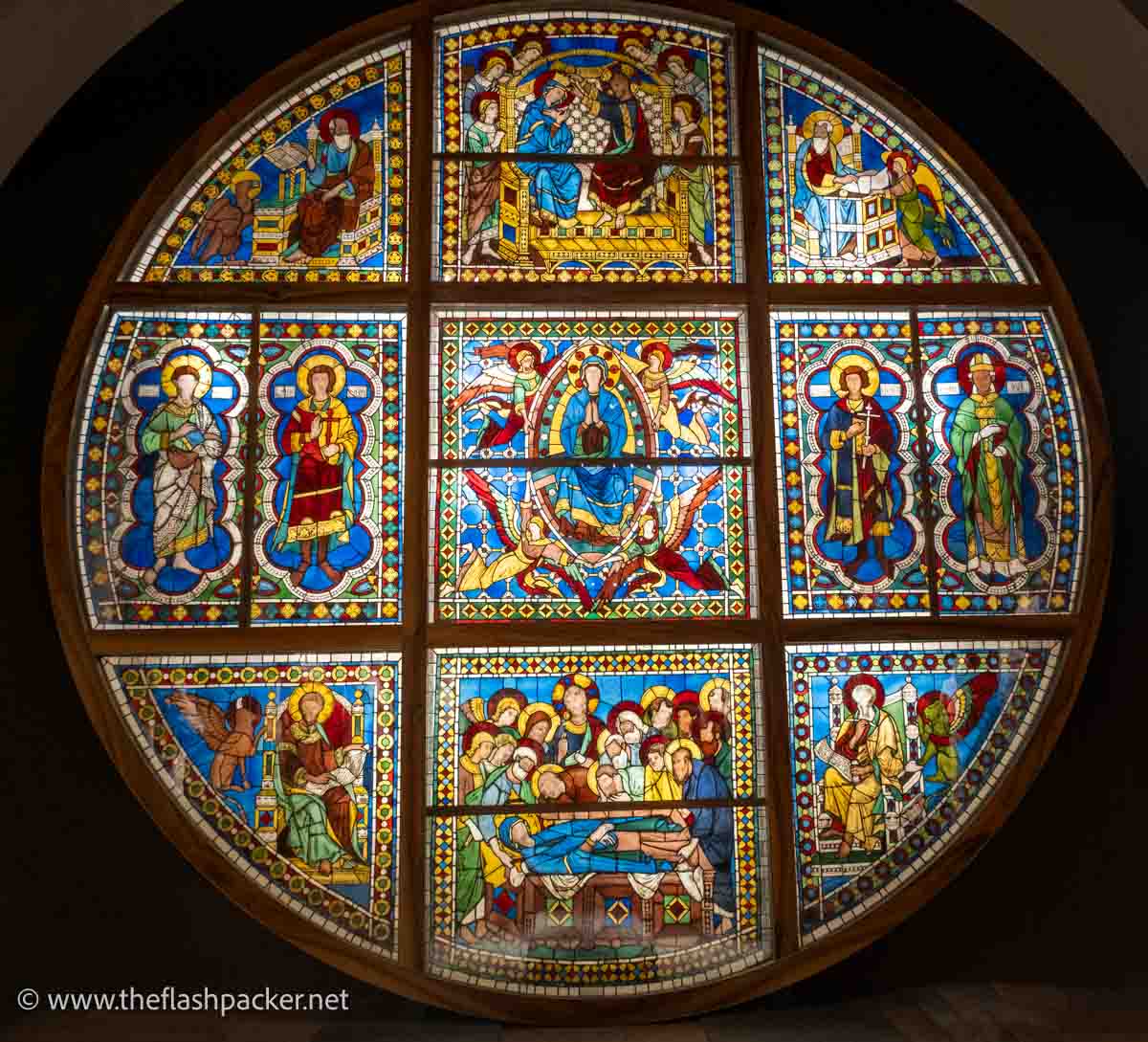
The Unfinished Façade (Facciatone) is a lasting reminder of Siena’s thwarted ambition
In 1339, Siena’s Council drew up plans to expand the existing cathedral, creating the largest in Christendom and trumping Florence’s Cathedral of Santa Maria del Fiore. Work started on a huge nave at its southern end, preserving the 13th-century cathedral as a transept of the so-called Duomo Nuovo.
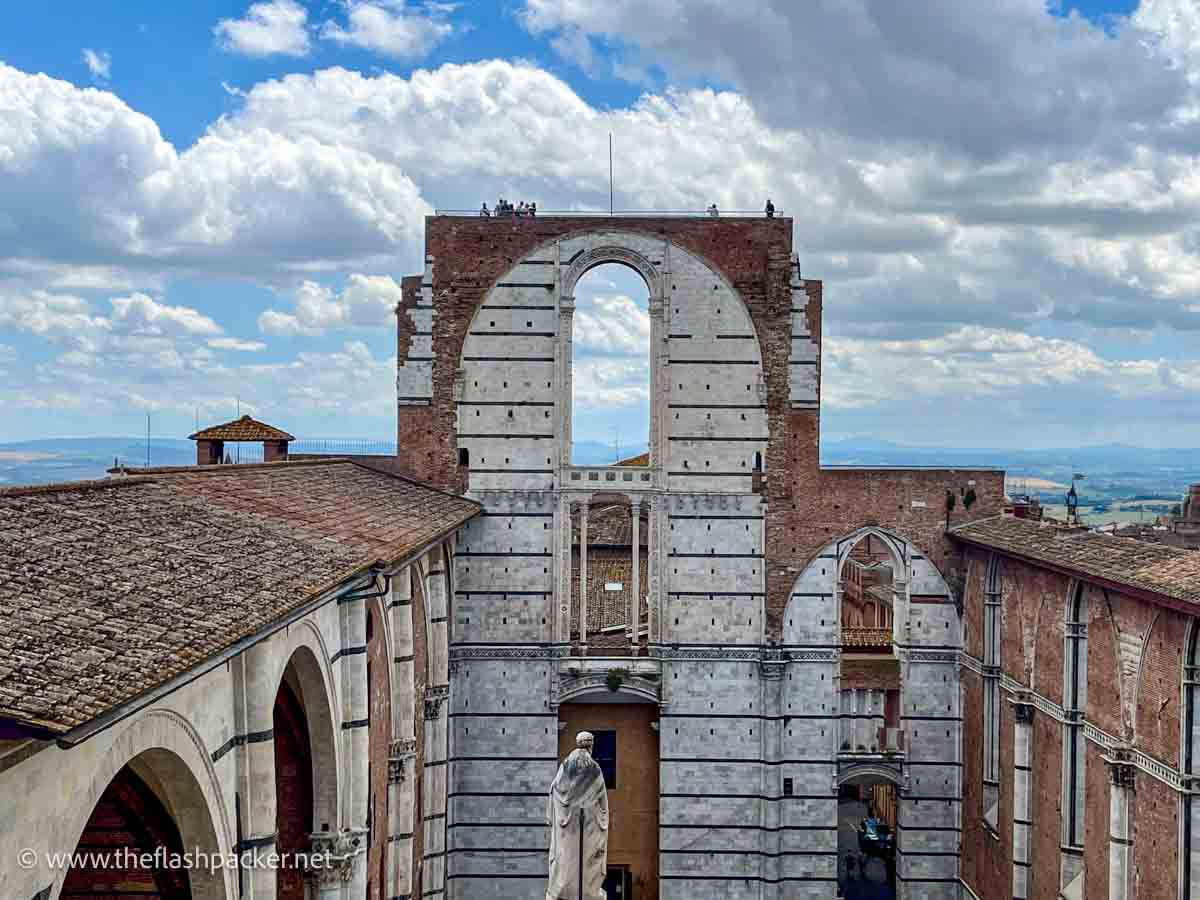
But the Black Death decimated the Siena’s population and scuppered these lofty ambitions. Today you can walk along the viewing platform on what would have been the cathedral’s entrance façade for the best views in town.
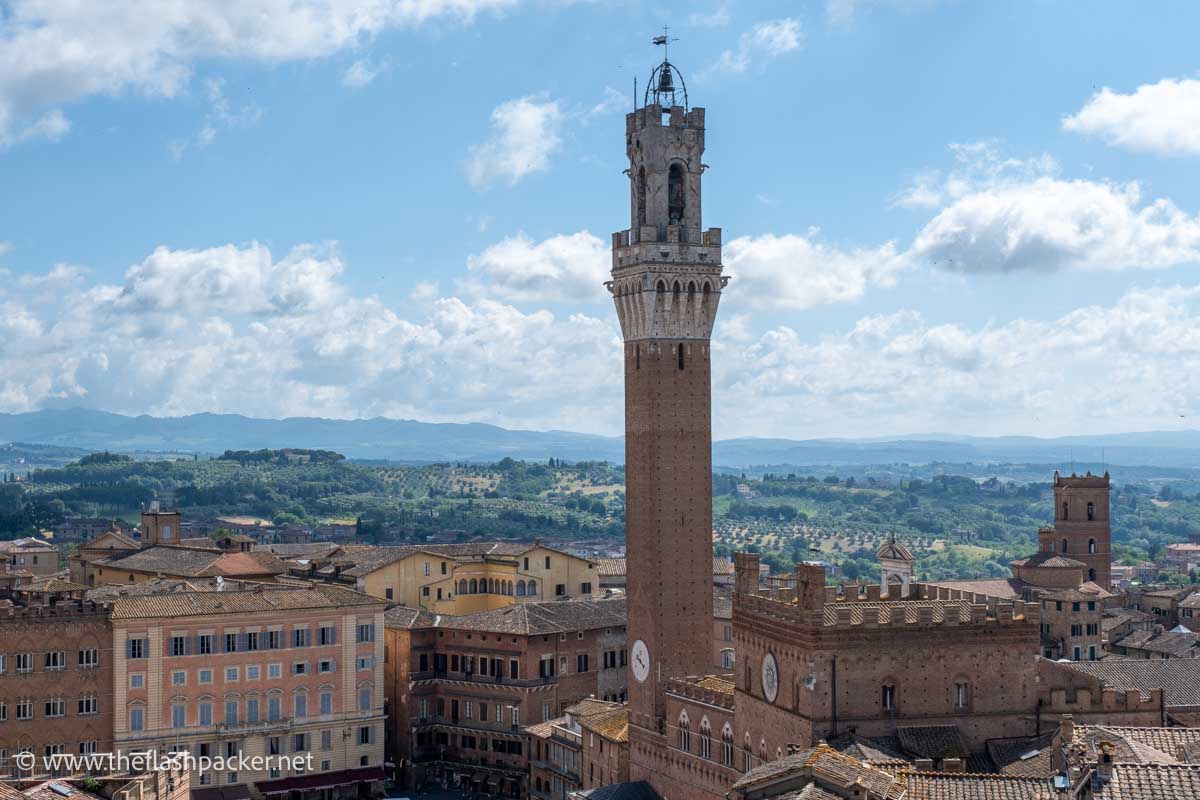
Santa Maria della Scala was one of Europe’s oldest hospitals
Founded in the 9th Century, Ospedale di Santa Maria della Scala is located directly across from the Siena Cathedral. For centuries, it served as a refuge for pilgrims, a centre for medical care and a hub for charitable activities, reflecting the medieval values of hospitality and communal support.
Today, Santa Maria della Scala is a museum, with exhibitions highlighting the interplay between faith, medicine and community life in Siena. Its vast subterranean tunnels offer a glimpse into the hospital’s operational infrastructure and exhibit the museum’s Etruscan finds.
But its star attraction is the 14th-century Pilgrims’ Hall (Sala dei Pellegrinaio), a wallpapered with animated frescoes illustrating the hospital’s history.
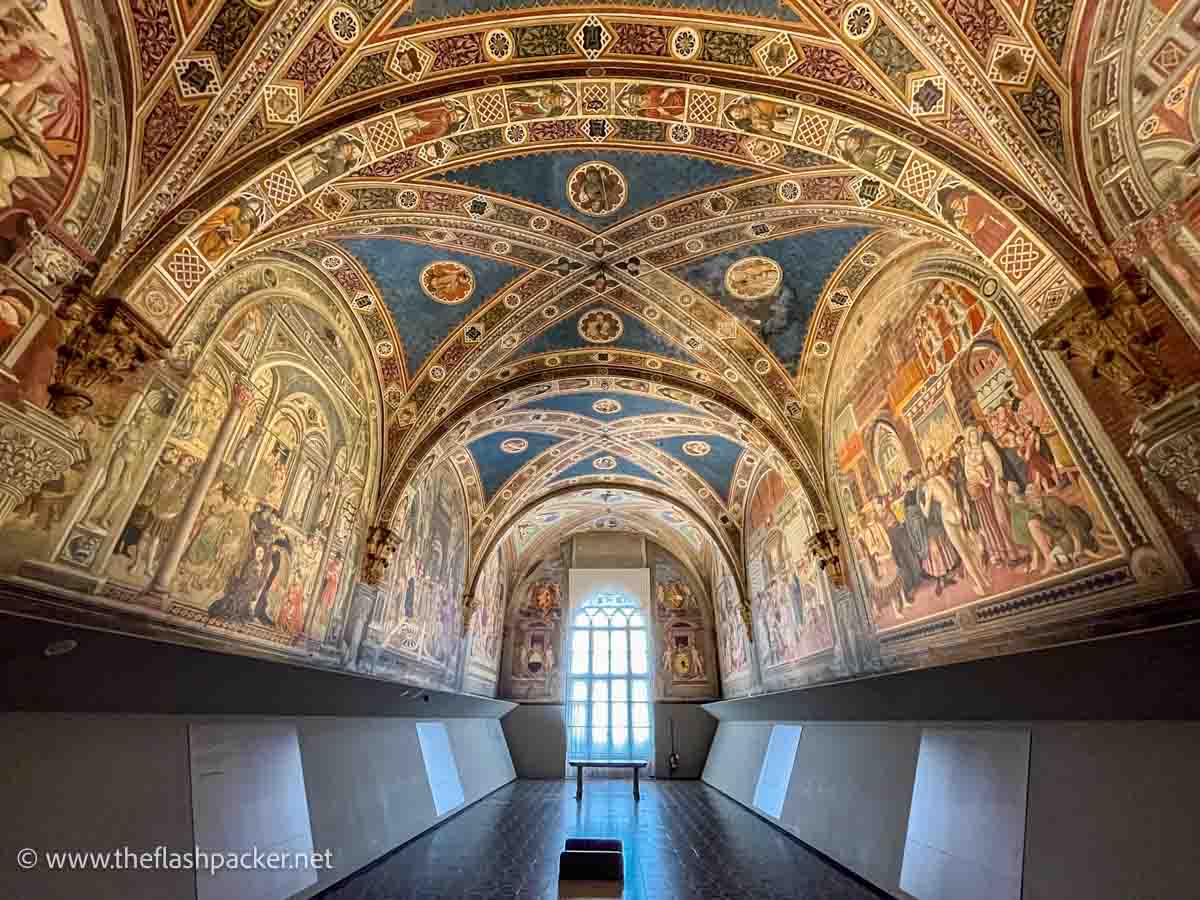
San Domenico houses an important religious relic
Born in 1347, Catherine of Siena was a prominent Italian mystic, theologian and member of the Dominican Order. She dedicated her life to serving the poor and sick, advocating for peace and working towards the reform of the church.
She was canonised in 1461 and you can view her head in the austere Basilica di San Domenico. Mercifully, photography is not allowed.
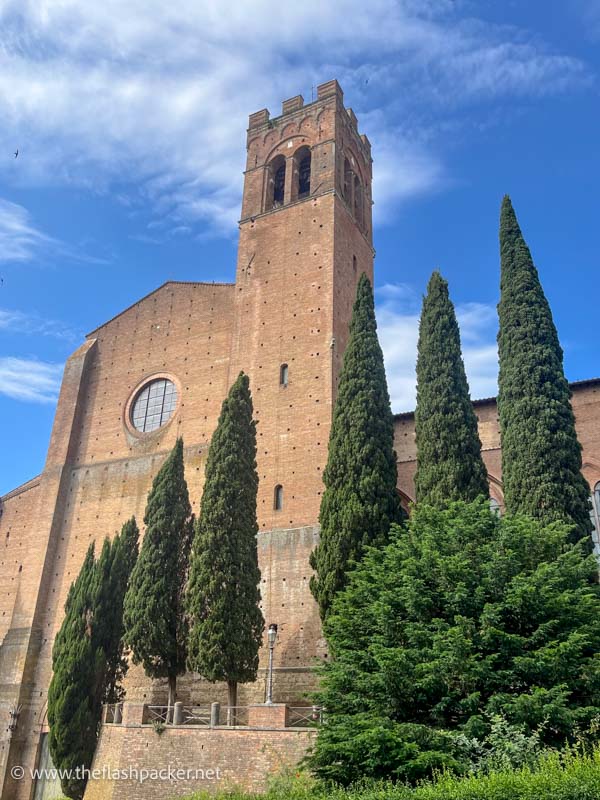
Leave time to get lost in the streets of Siena
As wonderful as these sights are – and they are fabulous – much of the joy of Siena comes from exploring its winding streets and views across the Tuscan countryside. It is particularly lovely in the evening when the city has emptied of day trippers and is at its most tranquil.
All that remains is to pick a favourite restaurant and settle back with an aperitivo. Saluti!
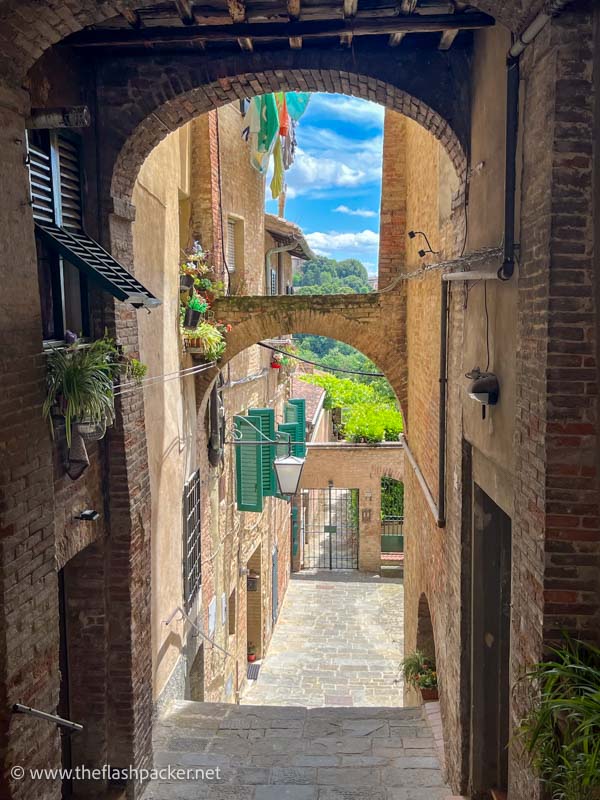
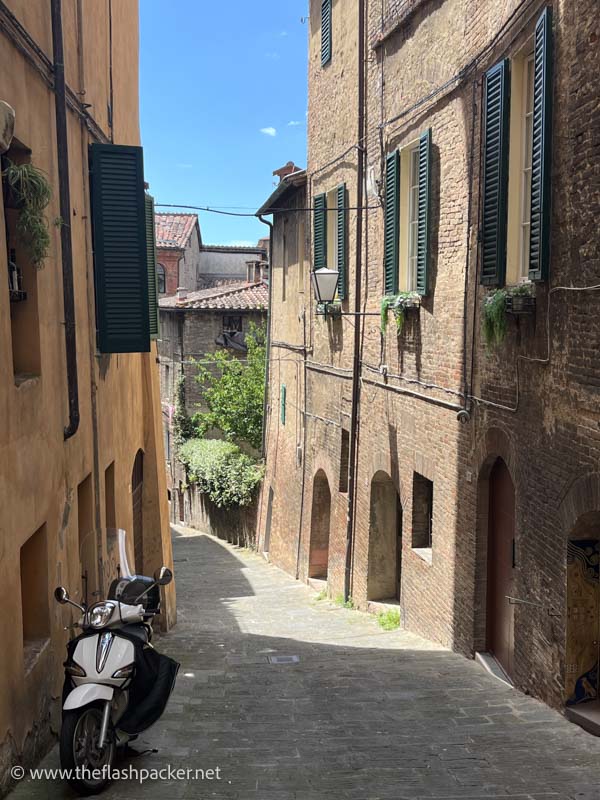
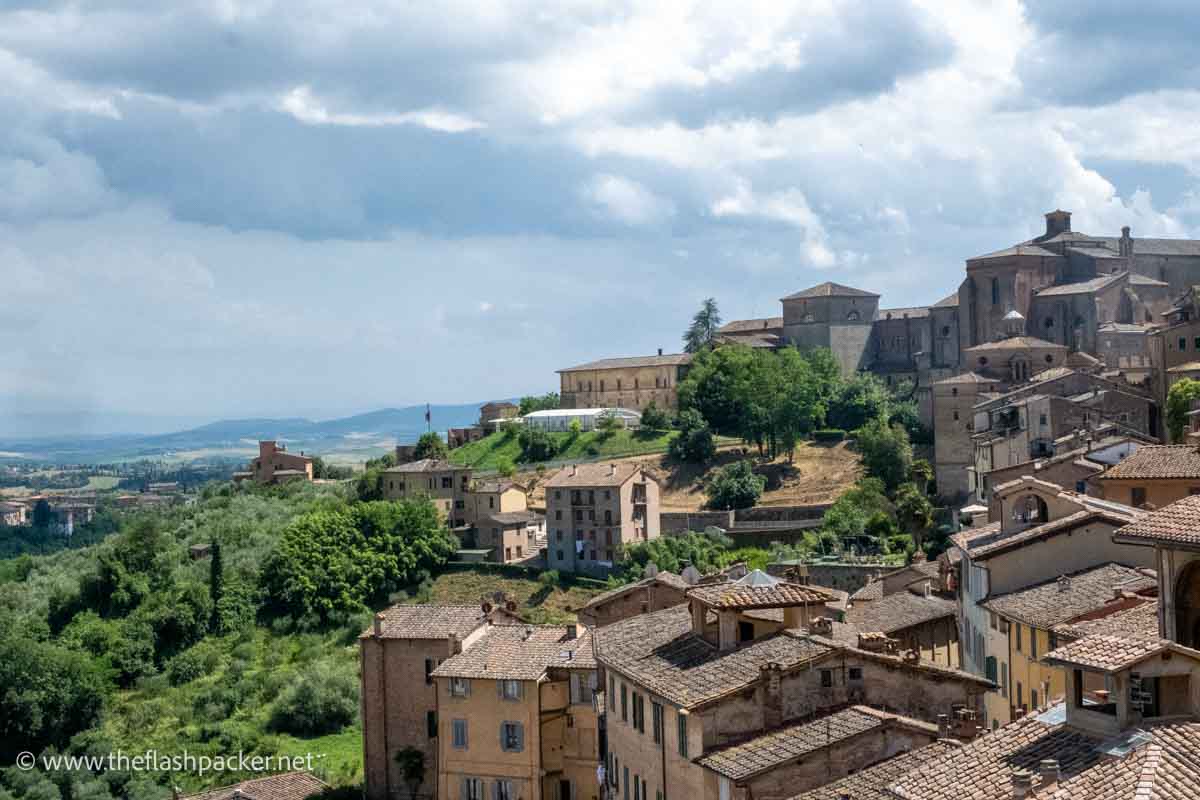
Practical Information
Tickets for Siena Cathedral: A quick explainer
Siena Cathedral is part of the Monument Complex of the Cathedral. This also includes the following:
You can visit the Cathedral and Piccolomoni Library with an individual ticket, which you can buy here. To see any other building of the Duomo Complex you’ll need the Opa Si Pass, which includes all of the sites.
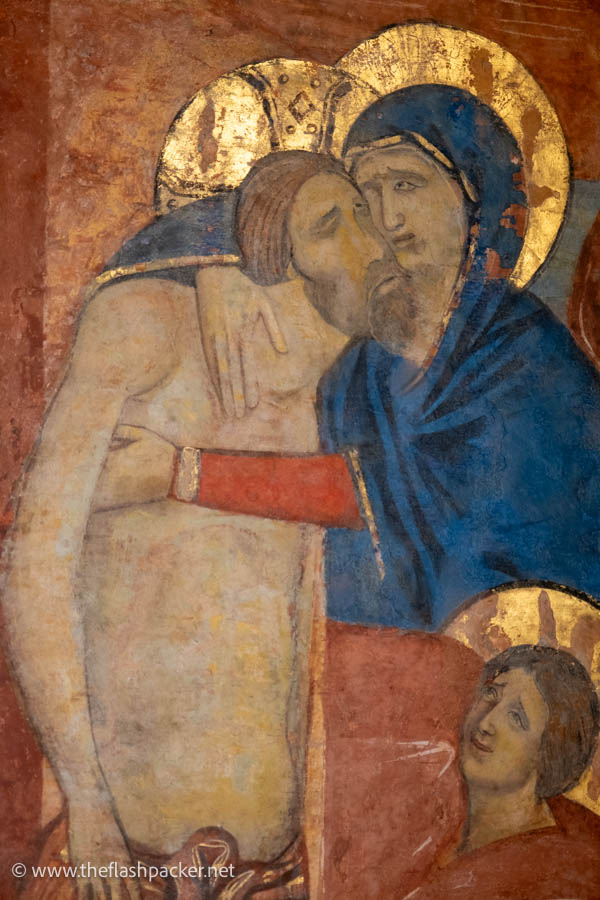
I upgraded my Opa Si Pass to include the Gate of Heaven ((Porta del Cielo). This is a walk in the vaults of the cathedral and along the terrace that wraps itself around the dome. It was a disappointing experience, very rushed and our views were hampered by netting above the cathedral floor.
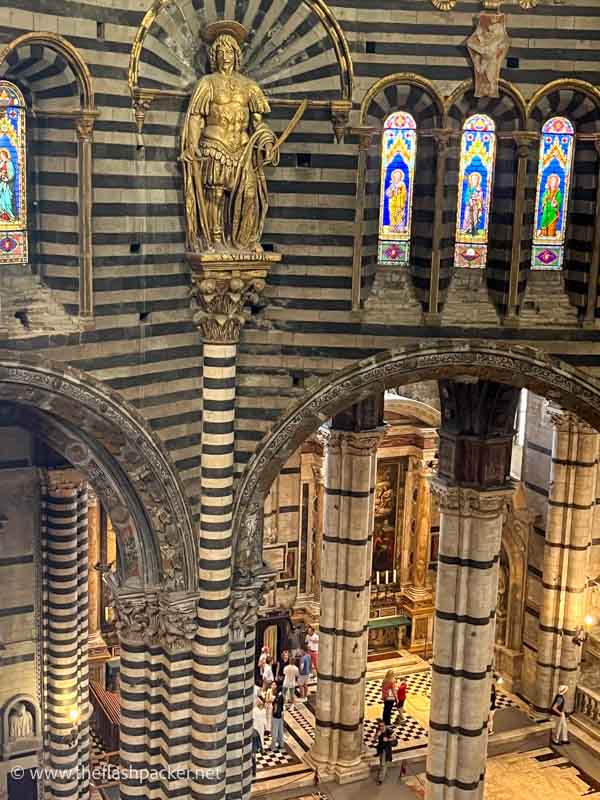
As queues at the ticket office can be lengthy, I recommend booking in advance. This is essential if you plan to do the Gate of Heaven “tour”.
Getting to Siena
Regional trains connect Siena with other Tuscan destinations, including Florence and Poggibonsi-San Gimignano (for San Gimignano). As fare prices are fixed, you don’t need to buy train tickets in advance.
Siena’s train station (Siena FS) is two kilometres downhill from the historic centre. Starting from the shopping mall across the square from the station’s exit, a series of escalators will take you up the hill. From here, it’s a 15-20-minute walk to the centre.
Buses are often a more convenient option. Services from Florence are frequent and stop at Piazza Gramsci or Via Tozzi, close to the historic centre.
My favourite restaurants
Here are a few places I tried and loved, both of which were recommended by my guesthouse hosts:
This historic restaurant serves inexpensive homely food. There’s no menu as such but a board with the day’s specials or the staff will guide you through the choices.
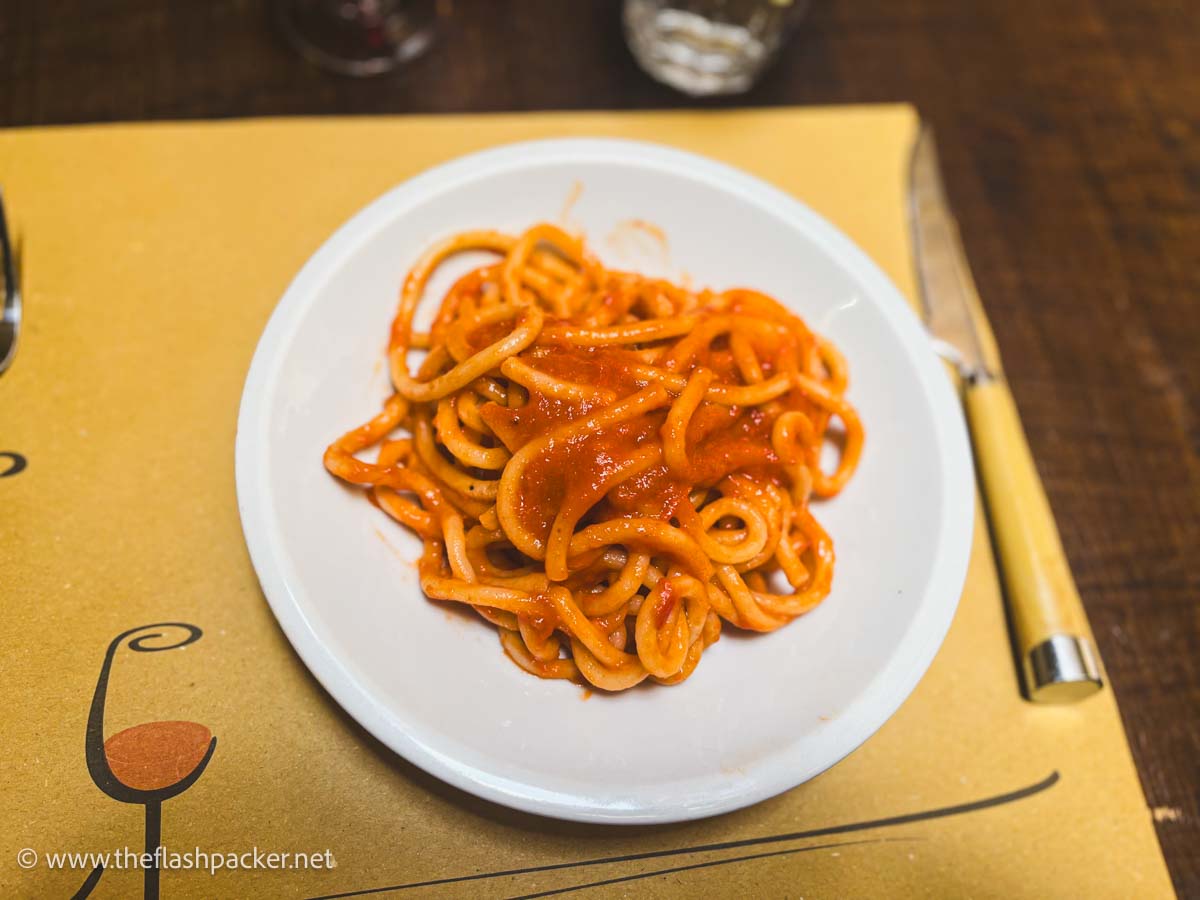
Prètto Prosciutteria e Convivio
This friendly prosciutteria serves amazing platters of local meats and cheeses. It’s also a great choice for a lunchtime sandwich.
Where to stay
I enjoyed my stay at Antica Residenza Cicogna, a guesthouse in the heart of Siena. It was full of character and the rate included breakfast was superb. The owners were friendly and helpful and I loved the shared lounge where you could relax with a hot drink.
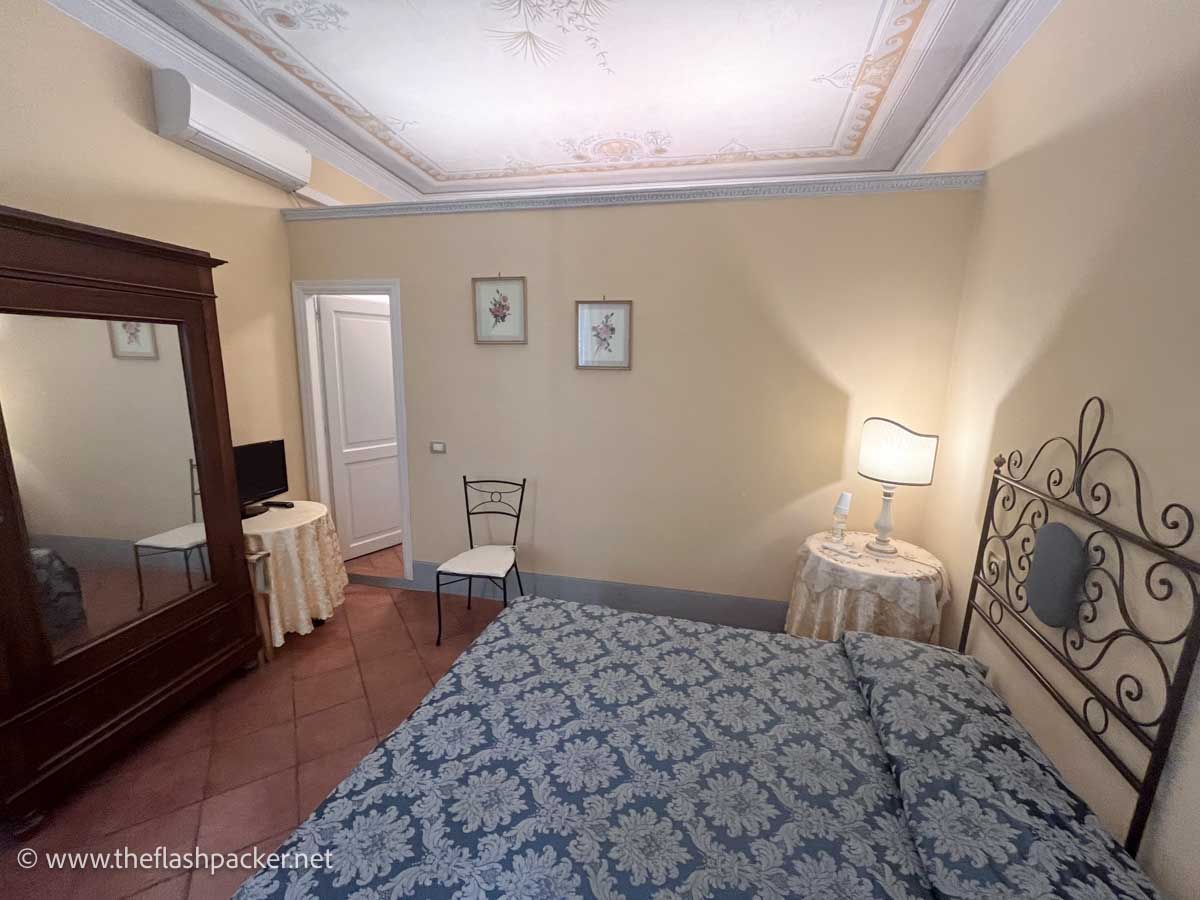
If this doesn’t meet your needs, take a look at these alternatives:
Views from some of the rooms in this highly-rated guesthouse need to be seen to be believed. One of them has a sauna!
This 3-star hotel is housed in a 13th-century palace in Siena’s historic centre and has attracted stellar reviews from other travellers. Breakfast is included and some of the more expensive rooms offer panoramic views.
Plan Your Trip to Tuscany
And that’s a wrap. I hope this article helps you identify what to do in Siena and you have the best time there. It is a special place.
If you are planning more travel in Tuscany, check out a few of my other guides before you leave:
FLORENCE: Plan your solo trip to Florence or discover how to spend three days in Florence. Alternatively, tailor-make your itinerary from my must-see sights in Florence and my art guides including Michelangelo’s artistic masterpieces in Florence and the paintings in the Uffizi Galleries.
Pick your perfect place to stay with my Florence accommodation guide.
TUSCANY: Narrow down your road tip choices with these gorgeous towns in Tuscany.
Happy travels!

About Bridget
Bridget Coleman has been a passionate traveller for more than 30 years. She has visited 70+ countries, most as a solo traveller.
Articles on this site reflect her first-hand experiences.
To get in touch, email her at hello@theflashpacker.net or follow her on social media.

